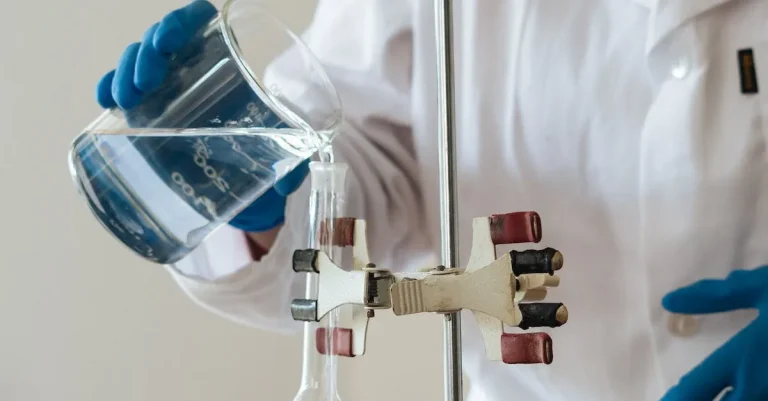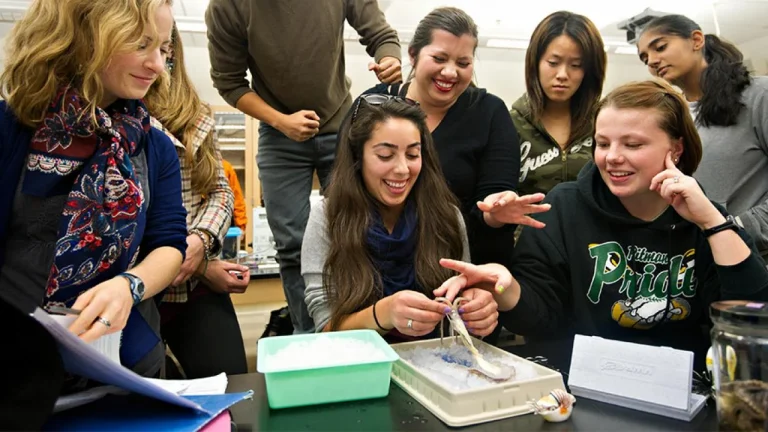What Grade Do You Take Forensic Science In High School?
Forensic science has become a popular class among many high school students thanks to its mix of science, logic, and criminal investigations. But in what grade can you actually take forensic science?
If you’re short on time, here’s a quick answer: Most high schools offer forensic science as an elective course in 11th or 12th grade.
This comprehensive article will provide an overview of typical forensic science course availability in U.S. high schools and the curriculum covered at different grade levels.
Middle School Introduction to Forensics
Forensic science is a fascinating field that combines science and investigation to solve crimes. While it is not typically taught as a formal subject in middle school, there are various ways in which students can be introduced to the basic concepts of forensic science.
These introductions help generate interest and lay the foundation for more advanced study in high school.
Extracurricular Clubs and Camps
One way for middle school students to get a taste of forensic science is through extracurricular clubs and camps. Many schools offer clubs or after-school programs focused on science, technology, engineering, and mathematics (STEM), which may include forensic science activities.
These clubs often provide hands-on experiences, such as analyzing fingerprints, examining crime scenes, or conducting simple experiments to understand the principles behind forensic techniques. Additionally, there are summer camps specifically designed to introduce middle school students to the world of forensics, allowing them to delve deeper into the subject in a fun and engaging way.
Very Basic Concepts and Activities
While middle school students may not have access to advanced forensic science equipment, teachers can still introduce them to the very basic concepts and activities of the field. Teachers can explain how forensic scientists analyze evidence to solve crimes, providing examples of real-life cases to make the subject more relatable.
They can also demonstrate simple techniques like dusting for fingerprints or conducting basic chemical tests. These activities not only pique students’ curiosity but also help them understand the scientific principles that underpin forensic science.
Generating Interest for High School Courses
An important goal of introducing forensic science in middle school is to generate interest among students for high school courses in the subject. By exposing students to the field at an early age, they can develop a passion for forensic science and consider pursuing it further in their academic journey.
Schools can organize guest lectures or invite forensic professionals to speak to students about their work and the educational paths to becoming a forensic scientist. Additionally, schools can provide resources, such as books, documentaries, or websites, that allow students to explore the subject on their own and discover its various applications.
While the formal study of forensic science typically begins in high school, middle school provides an excellent opportunity to introduce students to the basic concepts and generate interest in the field.
By offering extracurricular clubs, conducting simple activities, and inspiring curiosity, educators can lay the groundwork for future forensic scientists.
High School Forensic Science Courses
Forensic science is an intriguing field that combines elements of science and criminal investigation. Many high schools offer forensic science courses as an elective during the junior or senior year. These courses provide students with a unique opportunity to explore the fascinating world of forensic science and gain a deeper understanding of how it is applied in real-life criminal investigations.
Junior or Senior Year Elective
Forensic science courses in high school are typically offered as an elective, meaning that students have the option to choose it as one of their classes. This allows students who have a particular interest in forensic science to delve deeper into the subject and explore it in more detail.
Taking a forensic science course in high school can be a great way to get a taste of what the field has to offer and determine if it is something they would like to pursue further in college or as a career.
Forensic Science Versus Criminal Justice
It’s important to note that forensic science is not the same as criminal justice. While both fields are related to the investigation and solving of crimes, forensic science focuses more on the scientific analysis of evidence, such as DNA analysis, fingerprinting, and ballistics.
Criminal justice, on the other hand, deals with the overall study of the criminal justice system, including law enforcement, courts, and corrections. The distinction between the two is important to understand when considering a high school forensic science course.
Prerequisites Like Biology and Chemistry
High school forensic science courses often have prerequisites, such as biology and chemistry. This is because forensic science heavily relies on scientific principles and techniques, and a solid understanding of these subjects is necessary to fully grasp the concepts taught in the course.
By having a strong foundation in biology and chemistry, students will be better equipped to understand and apply the scientific methods used in forensic investigations.
It’s worth mentioning that some high schools may offer forensic science courses as part of a larger science curriculum, where students can take courses in biology, chemistry, and physics before diving into forensic science.
This sequential approach allows students to build a solid scientific foundation before focusing specifically on forensic science.
Curriculum and Learning Objectives
When it comes to studying forensic science in high school, the curriculum and learning objectives can vary depending on the school and the specific course being offered. However, there are some common topics that are typically covered in forensic science classes.
Crime Scene Investigation and Evidence Collection
One of the main focuses of forensic science in high school is crime scene investigation and evidence collection. Students will learn about the proper techniques for processing a crime scene, including documenting and photographing the scene, collecting physical evidence, and preserving it for analysis.
They may also learn about the different types of evidence that can be found at a crime scene, such as fingerprints, footprints, and fibers.
According to the FBI, crime scene investigation is a crucial part of solving crimes and can provide valuable information that can help identify suspects and establish a timeline of events. By learning about crime scene investigation in high school, students can develop a strong foundation in forensic science and gain a better understanding of how evidence is collected and analyzed in real-life criminal investigations.
Fingerprint and DNA Analysis
Another important topic covered in forensic science classes is fingerprint and DNA analysis. Students will learn about the unique characteristics of fingerprints and how they can be used to identify individuals.
They may also learn about the different types of fingerprint patterns and how to properly collect and analyze fingerprints.
In addition to fingerprints, students may also learn about DNA analysis and how it is used in forensic investigations. They may learn about the process of extracting DNA from samples, analyzing it using various techniques, and comparing it to a database to identify potential suspects.
DNA analysis is a powerful tool in forensic science and has played a crucial role in solving many high-profile criminal cases.
Studying Famous Criminal Cases
In some forensic science classes, students may have the opportunity to study famous criminal cases and learn how forensic evidence played a role in the investigation and prosecution. By examining real-life cases, students can see firsthand how forensic science is applied in the real world and gain a deeper appreciation for its importance in the criminal justice system.
Studying famous criminal cases can also help students develop critical thinking and analytical skills as they analyze the evidence and try to piece together the events of the crime. It can be a fascinating and engaging way to learn about forensic science and its practical applications.
Developing Skills for Future Careers
Forensic science is a fascinating field that combines elements of science, investigation, and the legal system. Many high school students are eager to explore this field and wonder when they can start studying forensic science.
While the availability of forensic science courses may vary by school, it is never too early to start developing the skills that will be valuable in future careers in this field.
Critical Thinking and Analysis
One of the most important skills in forensic science is critical thinking and analysis. Forensic scientists are tasked with examining evidence, analyzing data, and drawing conclusions based on their findings.
This requires them to think critically, consider all possible scenarios, and make logical connections. Developing these skills can start in high school by taking courses in science, math, and logic. Additionally, participating in problem-solving activities, such as puzzles or brain teasers, can help sharpen these skills.
Attention to Detail
In forensic science, attention to detail is crucial. Forensic scientists must carefully document and analyze evidence, ensuring that nothing is overlooked. This requires a keen eye for detail and the ability to notice even the smallest inconsistencies.
High school students can start honing this skill by paying attention to details in their daily lives. Whether it’s observing minute changes in their surroundings or carefully proofreading their assignments, practicing attention to detail can help lay the foundation for a successful career in forensic science.
Understanding the Justice System
Forensic science is closely tied to the justice system, so it’s important for high school students interested in this field to have a solid understanding of how the legal system works. Taking courses in civics, government, or criminal justice can provide valuable insights into the legal processes and procedures that forensic scientists often encounter.
Additionally, staying informed about current events and high-profile criminal cases can help students develop a deeper understanding of the intersection between forensic science and the justice system.
While high school may not offer specific forensic science courses in every school, there are many ways for students to start developing the skills necessary for future careers in this field. By focusing on critical thinking and analysis, attention to detail, and understanding the justice system, students can lay a strong foundation for success in the exciting world of forensic science.
Conclusion
While occasional middle school programs introduce forensics, most students take high school forensic science as an 11th or 12th grade course to prepare for college or careers.
The curriculum aims to build investigative and scientific skills by teaching the techniques experts use to solve crimes.







